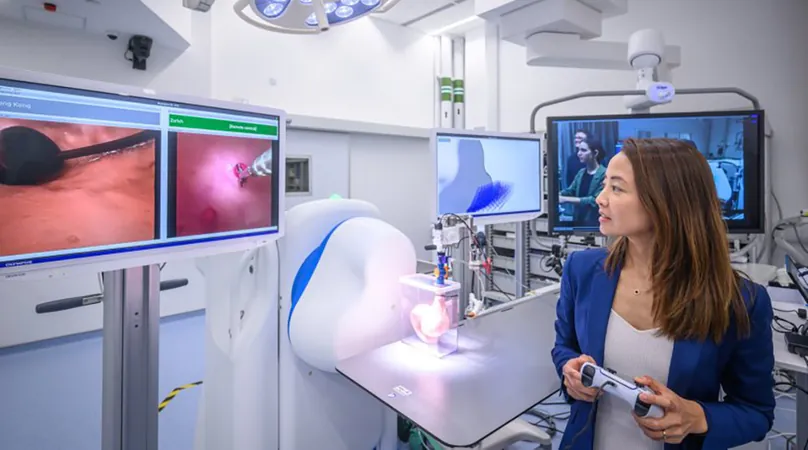
The Quest for Clarity: Navigating the Complexities of Long COVID Diagnosis
2024-09-30
In a groundbreaking study published today in Nature Communications, Canadian researchers shed light on the diagnostic hurdles related to long COVID, reinforcing concerns surrounding the World Health Organization's (WHO) clinical definition of the condition. They discovered that over one-third of patients who had previously visited emergency departments (ED) with confirmed COVID-19 cases exhibited long COVID symptoms, a worrying statistic considering that 20% of individuals who had tested negative also met similar criteria.
The Overdiagnosis Dilemma
Research indicates that infection status at the time of the pandemic's peak has critical implications for diagnosis. With fewer people seeking SARS-CoV-2 testing as the virus has become more endemic, individuals who have not been tested may still develop symptoms consistent with post-COVID-19 conditions (PCC). This trend raises alarms for potential overdiagnosis under the current WHO guidelines.
Analyzing 6,723 eligible ED patients, the study team from Université Laval, Quebec, found that 58.5% had tested positive for COVID-19 at least three months earlier. The average patient was 54 years old, and the incidence of long COVID symptoms was higher among women.
At the three-month mark, 38.9% of infected individuals reported experiencing at least one long COVID symptom, compared to only 20.7% of uninfected patients. This disparity persisted as time passed, with 33.1% of COVID-19 patients and 17.3% of their uninfected counterparts having long COVID symptoms after a year.
Risk Factors and the Role of Vaccination
Key risk factors for developing long COVID included being female, loss of smell or taste during the initial ED visit, and having a positive COVID-19 test. Notably, vaccination did not appear to influence the risk of long COVID scenarios.
Infected patients reported long COVID symptoms significantly more frequently than their uninfected peers, with many noting cognitive challenges such as memory issues and problems concentrating, particularly in patients infected with the Omicron variant.
Toward More Accurate Diagnoses
The authors advocate for continued testing during suspected COVID-19 infections and the need for specific biomarkers that would better delineate long COVID from other diseases like ME/CFS. They suggest that integrating elements like persistent cough and abnormal taste or smell could refine diagnostic processes further.
ME/CFS Insights: A Valuable Resource
The Australian meta-analysis, which evaluated 1,973 long COVID patients across 13 clinical studies, revealed that a significant majority were women, and the follow-up period averaged around seven months. The researchers demonstrated a historical link between viral infections and the development of ME/CFS, noting that such syndromes could often stem from previous ailments.
Interestingly, the findings suggest that approximately half of long COVID patients exhibit symptoms in line with ME/CFS, such as fatigue and sleep disturbances, pointing out the need to adapt ME/CFS diagnostic criteria for long COVID cases. The variability in diagnostic tools utilized across different studies, however, poses a challenge in determining a standardized approach.
Conclusion: Learning from the Past
As research into long COVID continues to evolve, specialists emphasize leveraging the wealth of knowledge from decades of ME/CFS research to inform and enhance our understanding of long COVID. With over 51% of long COVID patients meeting the diagnostic criteria for ME/CFS, the integration of these fields could streamline diagnosis and treatment, ultimately improving patient care.
Understanding the intricacies of long COVID is paramount as it affects millions globally, and addressing the complexities of its diagnosis can pave the way for better management strategies and outcomes.




 Brasil (PT)
Brasil (PT)
 Canada (EN)
Canada (EN)
 Chile (ES)
Chile (ES)
 España (ES)
España (ES)
 France (FR)
France (FR)
 Hong Kong (EN)
Hong Kong (EN)
 Italia (IT)
Italia (IT)
 日本 (JA)
日本 (JA)
 Magyarország (HU)
Magyarország (HU)
 Norge (NO)
Norge (NO)
 Polska (PL)
Polska (PL)
 Schweiz (DE)
Schweiz (DE)
 Singapore (EN)
Singapore (EN)
 Sverige (SV)
Sverige (SV)
 Suomi (FI)
Suomi (FI)
 Türkiye (TR)
Türkiye (TR)